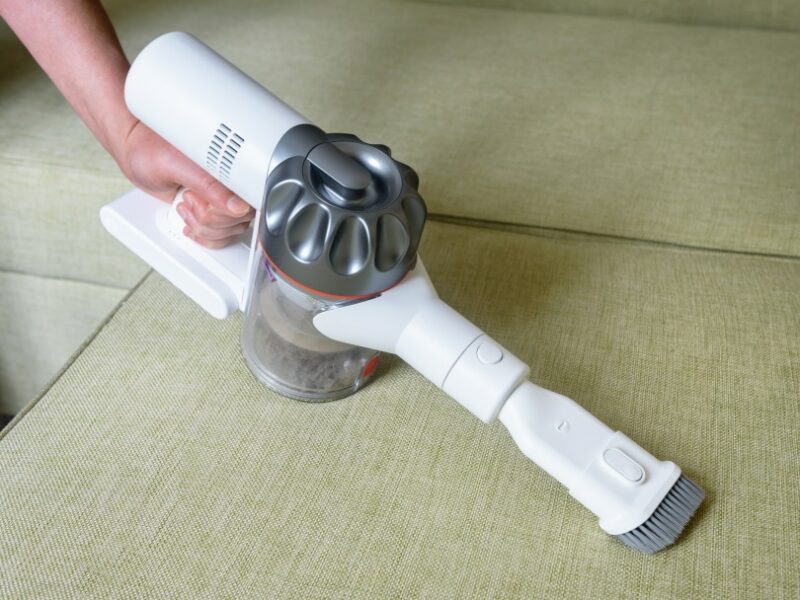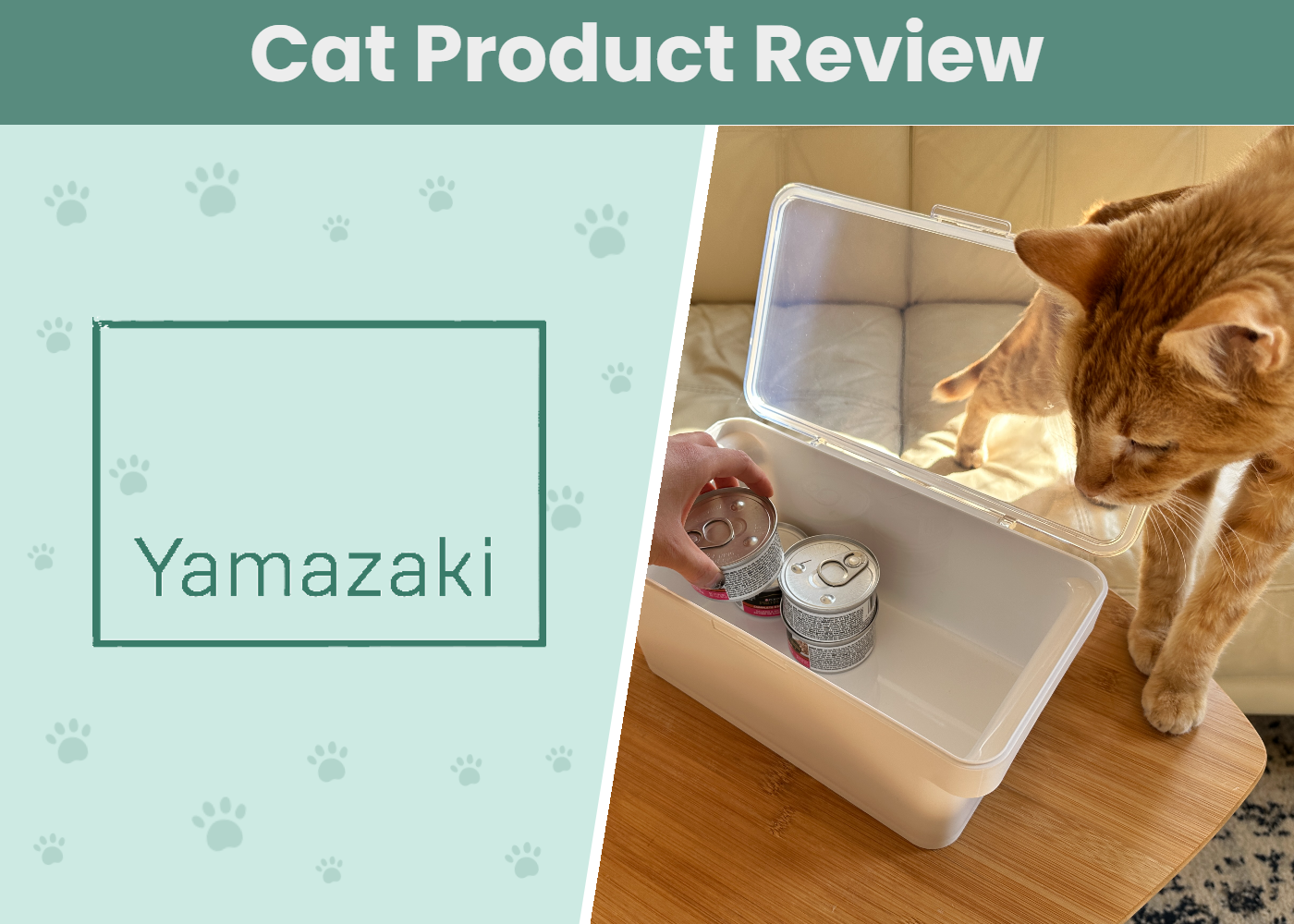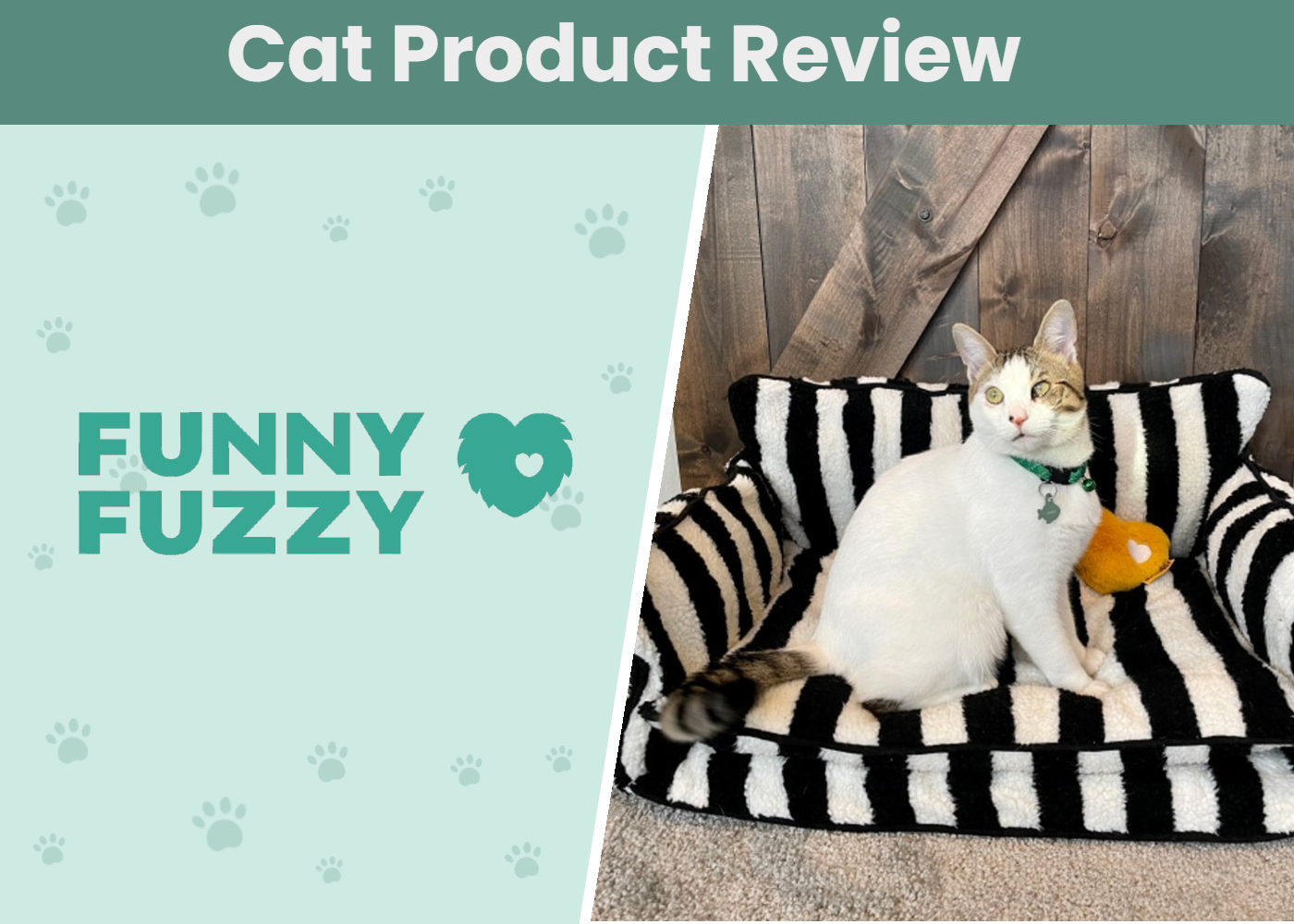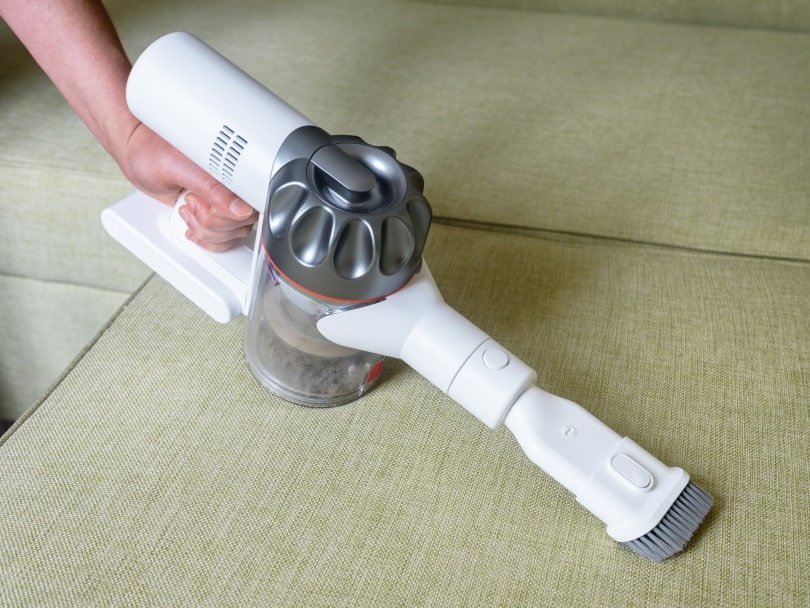
Cleaning up scattered litter is an inevitable part of cat ownership. This daily task can be quite a struggle if you don’t have the right vacuum for the job. A handheld vacuum will undoubtedly make your life easier by preventing you from dragging out the full-sized vacuum every time you notice stray litter.
There is no shortage of handheld vacuums on the market today, and while many of them are geared toward pets, that does not necessarily mean they perform well when cleaning cat litter. That’s where we come in. We’ve examined the vast number of handheld vacuums available to find the best contenders for your cat litter needs.
Below, you’ll find our reviews of six of the best handheld vacuum cleaners for cat litter.
A Quick Comparison of Our Favorites of 2024
| Image | Product | Details | ||
|---|---|---|---|---|
| Best Overall |

|
BLACK+DECKER Cordless Handheld Vacuum |
|
CHECK PRICE |
| Best Value |

|
Dirt Devil Handheld Vacuum Cleaner |
|
CHECK PRICE |
| Premium Choice |
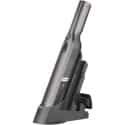
|
Shark Ion W1 Handheld Vacuum |
|
CHECK PRICE |
| Best for Kittens |
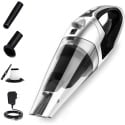
|
VacLife Handheld Vacuum |
|
CHECK PRICE |

|
BISSELL Pet Hair Hand Vacuum |
|
CHECK PRICE |
The 6 Best Handheld Vacuum Cleaners for Cat Litter
1. BLACK+DECKER 20V Max Cordless Handheld Vacuum – Best Overall
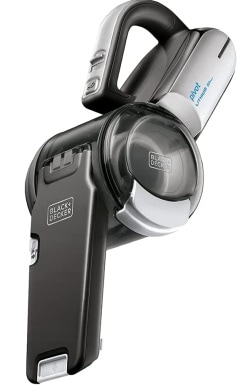
| Weight | 3 pounds |
| Battery | 20V Lithium |
| Included Components | Washable filter (model pvf110), on-board brush, on-board crevice tool, and charging base |
| Surface Recommendation | Any |
Our pick for the best overall handheld vacuum for cat litter goes to the Black & Decker 20V Max Cordless Handheld Vacuum. It gets the number one position thanks to its powerful suction, ease of cleaning, and versatility. The 20V lithium-ion battery it uses can be thanked for the strong suction, and the vacuum doesn’t have any trouble getting cat litter off any surfaces.
The Black and Decker vacuum separates the dirt and air using cyclonic action and retains its suctioning power throughout the vacuum’s lifetime. The vacuum is lightweight, weighing only 3 pounds, and uses a three-stage filtration system that helps reduce odors and enhance performance. Smell reduction is an important aspect when cleaning up litter.
Another great feature that makes this vacuum so convenient is the pivoting nozzle that can rotate up to 200 degrees. This makes reaching down into furniture cushions or hard-to-reach areas of the house much easier. This vacuum is an excellent option for the daily vacuuming of cat litter and a great handheld vacuum for use in the home or car.
According to customers, the Black and Decker 20V Max’s downside is that it only lasts about 10 minutes after a full charge. Some users also complained that it only lasted a year before experiencing issues with the suction.
- 20V lithium battery for strong suction power
- Pivoting nozzle with various attachments
- Cordless and bagless
- A superior 3-stage filtration system
- Cyclonic action separates dust from the filter
- 2-year warranty
- Short run time after charging
- Some vacuums have issues about a year after purchase
2. Dirt Devil Scorpion Handheld Vacuum Cleaner – Best Value
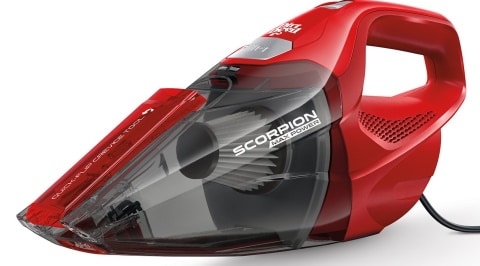
| Weight | 3.7 pounds |
| Battery | N/A |
| Included Components | Hose, crevice tool, sliding brush, upholstery tool |
| Surface Recommendation | Any |
Our top pick if you’re looking for the best value for your money is the Dirt Devil Scorpion Handheld Vacuum Cleaner. It gets great reviews, and you really can’t beat the price. It is a corded handheld vacuum, which may make it undesirable to some, but the cord is too long.
This lightweight vacuum has a powerful motor to enhance performance when picking up whatever your pet leaves behind, such as litter, dirt, debris, and hair. The Dirt Devil’s crevice tool makes it a breeze to clean smaller spaces like between furniture cushions.
There is no vacuum bag with the Dirt Devil Scorpion Handheld Vacuum Cleaner, making it easy to unlatch and dump out all that you’ve collected. According to users, the biggest downfall of this vacuum is that air is pushed out of the vents on the side, which can spread litter and other debris across hard surfaces. A few others said that their vacuum broke easily, but overall, the Dirt Devil Scorpion is a powerful handheld vacuum that is also affordable.
- Inexpensive
- Lengthy cord
- Strong suction
- Side vents push out air
- The cord can be restricting
- Can break easily
3. Shark Ion W1 WV201 Handheld Pet Vacuum – Premium Choice

| Weight | 1.4 pounds |
| Battery | 8V Lithium |
| Included Components | Nozzle, battery, crevice tool, charging station |
| Surface Recommendation | Any |
Our premium choice goes to the Shark Ion W1 WV201 Handheld Pet Vacuum. This lightweight, stick-shaped handheld vacuum weighs just 1.4 pounds and gets glowing reviews. It is versatile enough to perform well on bare floors, carpets, and hard-to-reach areas, thanks to the additional brush attachments.
Despite being so lightweight, the Shark Ion has powerful suction, a 10.8V lithium battery, and a highly efficient motor. The battery generally takes about 2.5 hours to fully charge, which is much less compared to the normal 3 to 4 hours. All the attachments and vacuum can conveniently be stored on the charging base. The vacuum comes in various colors, including graphite, gold, rose gold, and cove blue.
Another perk is how easy the vacuum is to clean. There is a button located at the top, and you can hold the vacuum over the trash can and press it to empty the contents without having to touch anything. It is bagless and easy to wipe clean. The biggest downside to the Shark Ion is the small dustbin and the short run time of about 9½ minutes after a full charge.
- Shorter charge time than competitors
- Ultra-lightweight
- Attachments for use on multiple surfaces
- Cordless & compact stick-shaped design
- One-touch debris emptying
- Works for less than 10 minutes per charge
- Higher price tag
4. VacLife Handheld Vacuum – Best for Kittens
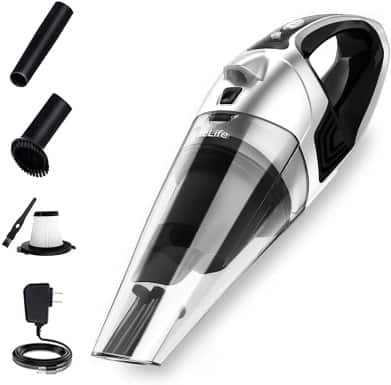
| Weight | 1.94 pounds |
| Battery | Lithium-ion |
| Included Components | Batter, nozzle, crevice tools, HEPA filter |
| Surface Recommendation | Carpets |
The VacLife Handheld Vacuum is cordless and utilizes a super-strong motor and a long-lasting lithium-ion battery suctioning power. It makes a great choice not just for cat litter but for any quick vacuuming needs around the house or in the car. It even comes with a super-convenient LED light so you can see to clean up in even the darkest, hard-to-reach places.
This vacuum is super lightweight at only 1.94 pounds. It comes with two separate nozzles for cleaning versatility. It takes approximately 3–4 hours to reach full charge, but you can expect it to run up to 20 minutes once fully charged, which is better than some cordless competition.
The VacLife Handheld Vacuum uses durable and washable HEPA filters. The dust bin is easy to clean; you open it up and dump it in the garbage can. Though the VacLife is a generally well-reviewed product, some users complained that the suction power and performance on carpets are a bit lackluster. So, it may be a better choice for those with laminate or hardwood floors.
- Lightweight
- Easy to clean
- LED Light
- Longer run time
- 3–4 hour charge time (long)
- Not a great option for hard surfaces
5. BISSELL Pet Hair Eraser Li-Ion Cordless Hand Vacuum
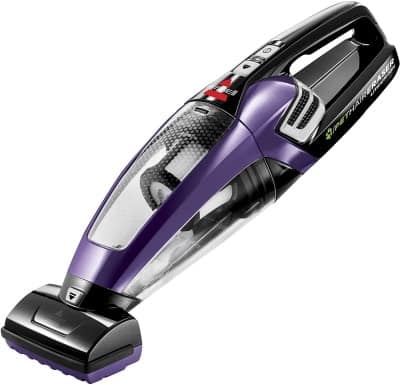
| Weight | 3 pounds |
| Battery | 14V Lithium-ion |
| Included Components | Battery, motorized brush tool, upholstery tool, crevice tool |
| Surface Recommendation | Any |
This compact and lightweight model may be designed to remove pet hair, but it also does a great job picking up loose litter. It is very efficient at picking up litter and pet hair that gets embedded in the carpet, so it is especially handy for those with litter boxes in carpeted areas. Upon activation, Bissell will even donate 5 dollars to the Bissell Pet Foundation with each purchase of the BISSELL Pet Hair Eraser Li-Ion Cordless Hand Vacuum.
The Pet Hair Eraser has a 14V lithium-ion battery for strong suction and powerful cleaning. The dust bin is sizable at 0.7 liters and can hold more litter, hair, dirt, and debris than other brands. There is a triple-level filtration in this vacuum as well, which helps with odors and allergens and provides easier cleaning.
The Bissell Pet Hair Eraser Li-Ion comes with specialized attachments for pets. This includes a motorized brush tool, an upholstery tool, and a crevice tool. According to reviews from other pet owners, the downside to the Pet Eraser is that it has a short run time after charging, and some vacuums have emitted a small electrical charge when the power button is pressed.
- Lightweight
- Value
- Comes with handy attachments
- Easy to clean and store
- Possible electrical charge when powering on
- Short run time (though better than some competitors)
6. BLACK+DECKER Dustbuster Handheld Vacuum Cleaner
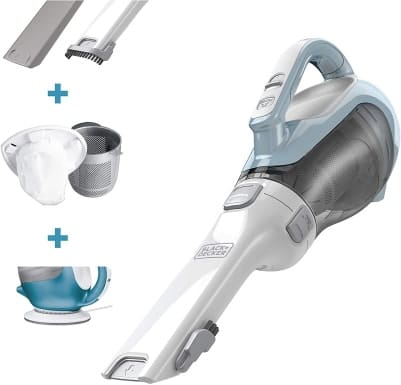
| Weight | 2.6 pounds |
| Battery | 16V Lithium-Ion |
| Included Components | Filter, user guide |
| Surface Recommendation | Any |
The Black+Decker Dustbuster Handheld Vacuum Cleaner is a lightweight, cordless handheld vacuum perfectly designed for spot cleaning and can be a great asset for daily litter clean-up. It is known for performing exceptionally well on bare floors, so it’s great for those who have a litter box on hard surfaces but does a great job on carpets and furniture as well.
The 16V lithium-ion battery lasts about 10 minutes after charging, which is typical for battery-powered handheld vacuums. The downside is that reaching full charge can take up to 4 hours. The dirt compartment is a bit on the small side, which is an inconvenience for bigger messes.
The Dustbuster has Smart Charge Technology and uses less energy. The cyclonic action keeps the filter clean and suction strong. It is also very easy to clean with the removable, washable bowl. The biggest downside to this vacuum is that users have reported the battery is not replaceable, and you’ll have to purchase another vacuum once the battery goes bad.
- Easy to clean
- Strong suction
- Replaceable filters provided by the manufacturer
- Small dust bin
- Short run time
- Long charge time
- Battery not replaceable
Buyer’s Guide: Selecting The Best Handheld Vacuum Cleaner for Cat Litter
There are several factors to consider when choosing the best handheld vacuum cleaner, especially when you’re using it for cat litter. Here are the key points to focus on when choosing a handheld vacuum.
- Cost: The product’s price is a factor in any purchase you make. Handheld vacuums come in a wide price range, and it’s important to know how much you’re willing to spend on one. You should select one that fits all your criteria, while not being too stressful on the wallet.
- Suction Power: The stronger the suction of a handheld vacuum, the better. Cat litter is small and gets stuck in crevices easily, and having a vacuum with less than stellar suctioning power doesn’t do you much good for this chore. You want the vacuum to be able to suck up pieces of litter and sticky clumps out of any area with ease. Strong suction will also make your vacuum more versatile in other areas of the house.
- Ability to Filter: Most cat litter on the market is made of clay. Even so, we sometimes change up our litter occasionally, and you need a handheld to handle the clay litter. It is easy for the clay to get stuck in the filter, which can clog up your vacuum and shorten its lifespan. Look for a model that can separate dirt and air using the bypass flow motor.
- Surface Recommendation: Some vacuums have surface recommendations. You need a handheld vacuum that can be used on all types of flooring and surfaces. Some come with different attachments so that they can be used more efficiently on various surfaces, such as furniture, carpet, hardwood, or laminate flooring. You don’t want to limit yourself to a vacuum that only performs well on the surface your litter box is sitting on. You will undoubtedly have to clean litter up from other areas of the house.
- Corded vs Cordless: As you can see, handheld vacuums come in cordless and corded versions. Cordless models are more convenient and easier to tote around. However, you need to consider how long it takes for the cordless vacuum to charge and how long you must run it during its battery life.
- Weight: Handheld vacuums are made to be convenient with their portability. You’ll not find any too heavy to hold in one hand, but some handheld vacuums are much lighter than others. The lighter the vacuum is, the easier it is to use.
- Easy to Clean: Cat litter is messy and smells awful. You have to clean your vacuum out frequently to prevent the odor from building up and keep the litter from becoming caked onto the inside. A handheld vacuum that is easy to disassemble and clean is vital. Not only is it convenient for you, but it will also ensure you get more life out of your vacuum.
Conclusion
Now that you know all the good, the bad, and the ugly when it comes to the top contenders for the best handheld vacuum, your choice should be that much easier. Whether you go for the well-rounded BLACK+DECKER 20V Max Cordless Handheld Vacuum, the price-savvy Dirt Devil Scorpion Handheld Vacuum Cleaner, the more expensive but sleek and effective Shark Ion W1 WV201, or any other of the top 7, you can rest assured you’ll be well on your way to convenient litter pick-up.
Featured Photo Credit: Viacheslav Lopatin, Shutterstock
Contents
- A Quick Comparison of Our Favorites of 2024
- The 6 Best Handheld Vacuum Cleaners for Cat Litter
- 1. BLACK+DECKER 20V Max Cordless Handheld Vacuum – Best Overall
- 2. Dirt Devil Scorpion Handheld Vacuum Cleaner – Best Value
- 3. Shark Ion W1 WV201 Handheld Pet Vacuum – Premium Choice
- 4. VacLife Handheld Vacuum – Best for Kittens
- 5. BISSELL Pet Hair Eraser Li-Ion Cordless Hand Vacuum
- 6. BLACK+DECKER Dustbuster Handheld Vacuum Cleaner
- Buyer’s Guide: Selecting The Best Handheld Vacuum Cleaner for Cat Litter
- Conclusion


